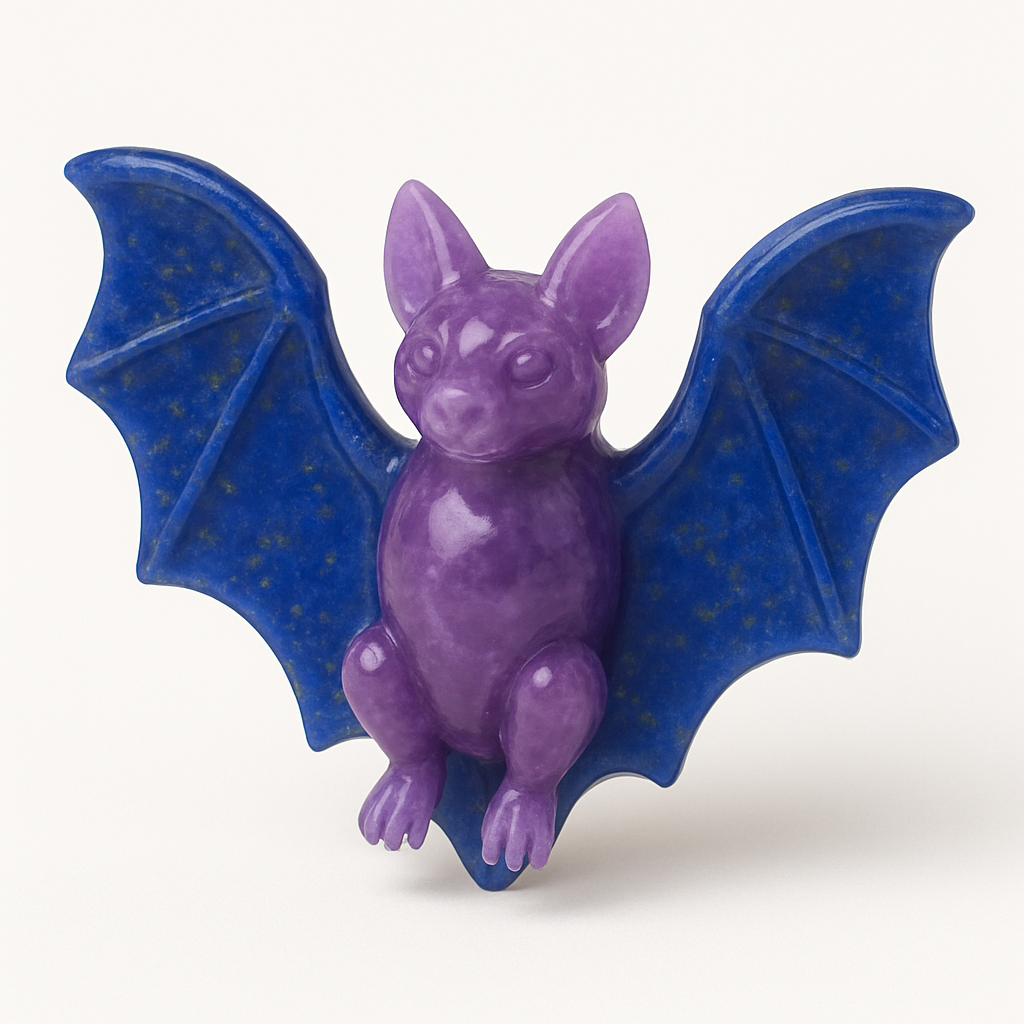
The Symbolism of Bats
Share
In the hour when light withdraws and the veil of night descends, the bat emerges—not as an intruder upon darkness, but as a native to it. Where most withdraw, it takes flight. Where others fear, it listens. The bat is not a creature of confusion, but of navigation through the unseen, a being whose world is shaped by resonance, echo, and attunement to what lies beyond ordinary sight.
To contemplate the bat is to step into a symbolic current of transformation, inversion, and liminal travel—an energy that does not reject the shadow, but moves within it gracefully, drawing its guidance from frequencies others cannot hear.
Whispers in Myth and Night
Throughout the cultural memory of this planetary sphere, the bat occupies a unique position—neither fully feared nor fully revered, but always respected. It appears often at the edge of the known, as if guarding the threshold between life and death, form and formlessness, light and shadow.
In many Indigenous American traditions, the bat is understood as a symbol of rebirth, its upside-down posture mimicking the fetal position—suggesting death not as an end, but as the entrance to transformation. In Chinese folklore, bats are associated with good fortune, the word for bat (蝠) sharing its pronunciation with "blessing" (福). In Europe, bats often became entangled in the lore of the night—symbols of witchcraft, omens, or shape-shifters, not because they were evil, but because they moved in ways that defied the daylight mind.
They are not messengers of doom, but emissaries of the unseen, asking not to be interpreted in haste, but to be heard in stillness.
The Art of Echolocation and Surrender
To observe a bat is to witness navigation without sight. It moves not by vision, but by sound—by sending out a pulse and listening for its return. It does not guess. It receives, interprets, and responds. In this, it becomes a living metaphor for the receptive path, the way of tuning to resonance rather than control.
Its flight appears erratic, but is in fact precise. Its upside-down rest reflects a world inverted, a perspective not aligned with the ordinary. The bat sleeps when others wake, emerges when others sleep, and finds safety not in noise, but in darkness. Its path is not through assertion, but through alignment with subtler currents.
This is the essence of the intuitive seeker: not pushing against the unknown, but moving with it, guided by trust in the signal’s return.
Resonance with the Energy Centers
The bat expresses a primary alignment with the indigo-ray energy center—the third eye chakra, the gateway to inner sight, subtle perception, and non-linear understanding. Its dependence on echolocation, its comfort in darkness, and its nocturnal rhythms reflect the seeker who has released the need for outward light and now moves by inner knowing.
The bat does not require clear vision. It requires attunement. It teaches that what cannot be seen may still be known. This is the path of the mystic—those who live not from surface clarity, but from deep, often solitary communion with truth beyond appearance.
There is also a secondary resonance with the violet-ray energy center, the crown chakra, which holds the totality of the self as unified being. The bat’s symbolism of death and rebirth, its role as a guide through the liminal, and its frequent appearance in rites of passage all point to an energy that transcends identity and enters into wholeness through surrender. The bat is not merely perceptive—it is initiatory, appearing when the old form is ready to dissolve.
Together, these resonances place the bat at the edge of form—where individuality is thinned, and perception becomes pure presence.
The Guide Through Shadows
The bat does not demand understanding. It invites it—quietly, from the folds of dusk. It teaches that what is feared in darkness may in fact be the source of guidance. That the end of sight is not the end of knowing. That rebirth requires inversion—of perception, of position, of expectation.
To walk with the symbol of the bat is to enter the cave willingly, to allow the senses to sharpen in silence, and to feel for truth rather than reaching. It is the ally of those undergoing transformation, initiation, or the dissolution of old identity.
The bat shows that flight is still possible
—even when one cannot see the sky.